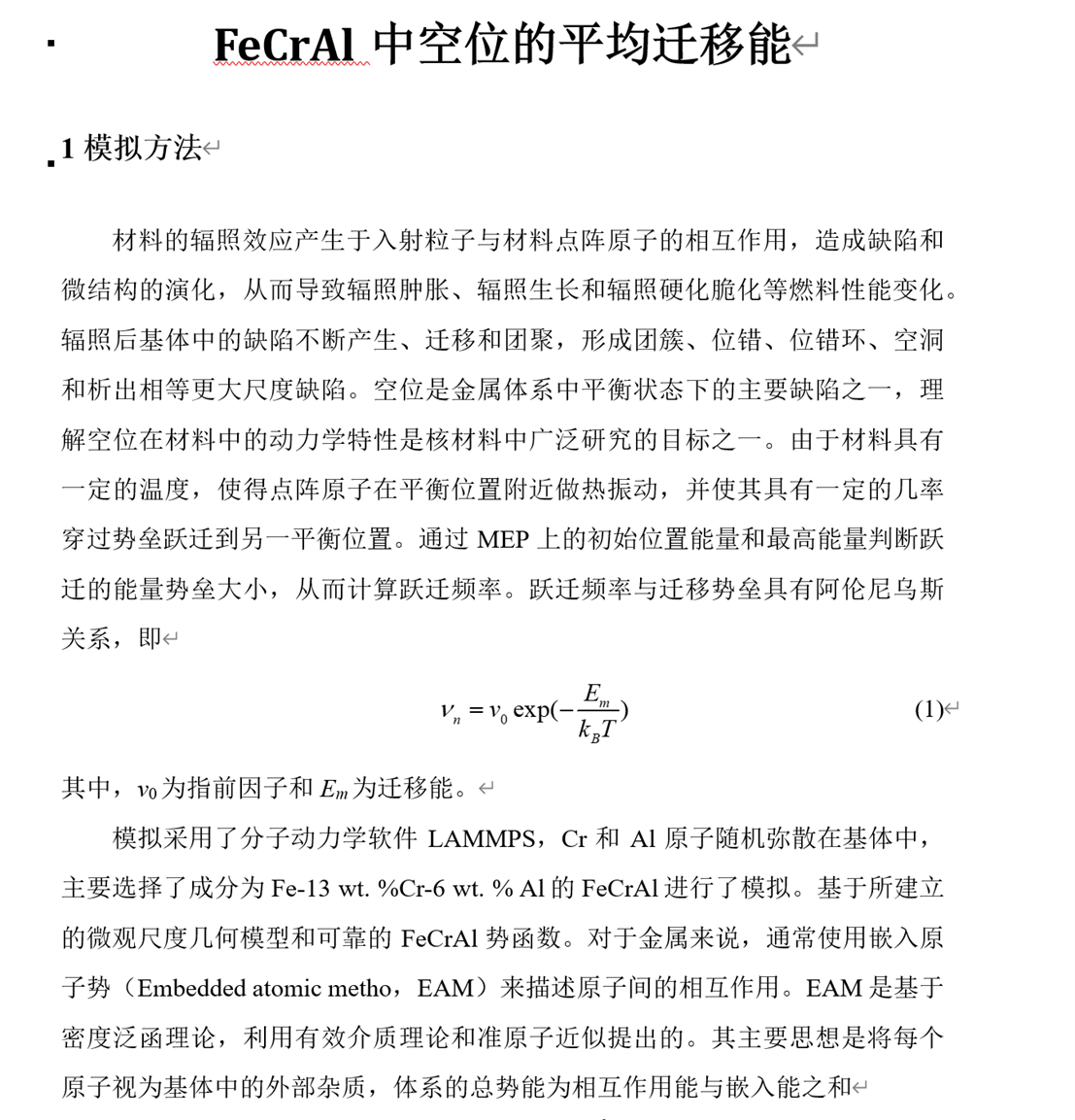
材料的辐照效应产生于入射粒子与材料点阵原子的相互作用,造成缺陷和微结构的演化,从而导致辐照肿胀、辐照生长和辐照硬化脆化等燃料性能变化。辐照后基体中的缺陷不断产生、迁移和团聚,形成团簇、位错、位错环、空洞和析出相等更大尺度缺陷。空位是金属体系中平衡状态下的主要缺陷之一,理解空位在材料中的动力学特性是核材料中广泛研究的目标之一。
The irradiation effect of materials arises from the interaction of incident particles with the lattice atoms of the material, resulting in defects and microstructure evolution, resulting in changes in fuel properties such as irradiation swelling, irradiation growth, and irradiation hardening embrittlement. After irradiation, defects in the matrix continue to generate, migrate and agglomerate, forming larger scale defects such as clusters, dislocations, dislocation loops, cavities and precipitation. Vacancies are one of the major defects in equilibrium in metal systems, and understanding the dynamics of vacancies in materials is one of the goals of extensive research in nuclear materials.